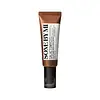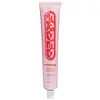What's inside
What's inside
 Key Ingredients
Key Ingredients

 Benefits
Benefits

 Concerns
Concerns

 Ingredients Side-by-side
Ingredients Side-by-side

Galactomyces Ferment Filtrate
HumectantGlycerin
HumectantCetyl Ethylhexanoate
EmollientPropanediol
SolventDicaprylyl Carbonate
Emollient1,2-Hexanediol
Skin ConditioningBetaine
HumectantCetearyl Alcohol
EmollientPolyglyceryl-10 Laurate
Skin ConditioningMethyl Trimethicone
Skin ConditioningSilica
AbrasiveCetearyl Olivate
Panthenol
Skin ConditioningPhenyl Trimethicone
Skin ConditioningPotassium Cetyl Phosphate
EmulsifyingWater
Skin ConditioningSorbitan Olivate
EmulsifyingBisabolol
MaskingAmmonium Polyacryloyldimethyl Taurate
Emulsion StabilisingHydroxyethyl Acrylate/Sodium Acryloyldimethyl Taurate Copolymer
Emulsion StabilisingDipropylene Glycol
HumectantSqualane
EmollientLaminaria Japonica Extract
Skin ProtectingEclipta Prostrata Leaf Extract
Skin Conditioning3-O-Ethyl Ascorbic Acid
Skin ConditioningGlutathione
Ethylhexylglycerin
Skin ConditioningParfum
MaskingLavandula Angustifolia Oil
MaskingCoptis Japonica Root Extract
Skin ConditioningXanthan Gum
EmulsifyingButylene Glycol
HumectantAdenosine
Skin ConditioningFructooligosaccharides
HumectantSorbitan Isostearate
EmulsifyingT-Butyl Alcohol
PerfumingHydrogenated Lecithin
EmulsifyingBeta-Glucan
Skin ConditioningHydrolyzed Hyaluronic Acid
HumectantAscorbic Acid
AntioxidantTocopherol
AntioxidantAllantoin
Skin ConditioningCeramide NP
Skin ConditioningOryza Sativa Bran Oil
EmollientOryza Sativa Bran Extract
Skin ConditioningGlyceryl Stearate
EmollientPhytosphingosine
Skin ConditioningCholesterol
EmollientCeramide AP
Skin ConditioningCeramide As
Skin ConditioningCeramide Ns
Skin ConditioningCaprylyl Glycol
EmollientCeramide Ng
Skin ConditioningCeramide EOP
Skin ConditioningLinalool
PerfumingLimonene
PerfumingGalactomyces Ferment Filtrate, Glycerin, Cetyl Ethylhexanoate, Propanediol, Dicaprylyl Carbonate, 1,2-Hexanediol, Betaine, Cetearyl Alcohol, Polyglyceryl-10 Laurate, Methyl Trimethicone, Silica, Cetearyl Olivate, Panthenol, Phenyl Trimethicone, Potassium Cetyl Phosphate, Water, Sorbitan Olivate, Bisabolol, Ammonium Polyacryloyldimethyl Taurate, Hydroxyethyl Acrylate/Sodium Acryloyldimethyl Taurate Copolymer, Dipropylene Glycol, Squalane, Laminaria Japonica Extract, Eclipta Prostrata Leaf Extract, 3-O-Ethyl Ascorbic Acid, Glutathione, Ethylhexylglycerin, Parfum, Lavandula Angustifolia Oil, Coptis Japonica Root Extract, Xanthan Gum, Butylene Glycol, Adenosine, Fructooligosaccharides, Sorbitan Isostearate, T-Butyl Alcohol, Hydrogenated Lecithin, Beta-Glucan, Hydrolyzed Hyaluronic Acid, Ascorbic Acid, Tocopherol, Allantoin, Ceramide NP, Oryza Sativa Bran Oil, Oryza Sativa Bran Extract, Glyceryl Stearate, Phytosphingosine, Cholesterol, Ceramide AP, Ceramide As, Ceramide Ns, Caprylyl Glycol, Ceramide Ng, Ceramide EOP, Linalool, Limonene
Water
Skin ConditioningCaprylic/Capric Triglyceride
MaskingGlycerin
HumectantNiacinamide
SmoothingButyrospermum Parkii Butter
Skin ConditioningTranexamic Acid
AstringentGlyceryl Stearate
EmollientArbutin
AntioxidantSimmondsia Chinensis Seed Oil
EmollientBehenyl Alcohol
EmollientGlyceryl Behenate
EmollientKojic Acid
AntioxidantOxidized Glutathione
EmollientPhenoxyethanol
PreservativeCeteareth-20
CleansingLecithin
EmollientSclerotium Gum
Emulsion StabilisingZinc Ricinoleate
Arginine Hcl
Skin ConditioningAzelaic Acid
BufferingSqualane
EmollientCeteareth-12
EmulsifyingCetearyl Alcohol
EmollientCetyl Palmitate
EmollientTetrahydroxypropyl Ethylenediamine
Curcuma Longa Callus Extract
Skin ProtectingSodium Lauroyl Sarcosinate
CleansingTrisodium Ethylenediamine Disuccinate
Phytic Acid
Allantoin
Skin ConditioningDimethylmethoxy Chromanyl Palmitate
Skin ConditioningEthylhexylglycerin
Skin ConditioningCentella Asiatica Leaf Extract
Skin ConditioningMelatonin
AntioxidantGlycyrrhiza Glabra Root Extract
BleachingWater, Caprylic/Capric Triglyceride, Glycerin, Niacinamide, Butyrospermum Parkii Butter, Tranexamic Acid, Glyceryl Stearate, Arbutin, Simmondsia Chinensis Seed Oil, Behenyl Alcohol, Glyceryl Behenate, Kojic Acid, Oxidized Glutathione, Phenoxyethanol, Ceteareth-20, Lecithin, Sclerotium Gum, Zinc Ricinoleate, Arginine Hcl, Azelaic Acid, Squalane, Ceteareth-12, Cetearyl Alcohol, Cetyl Palmitate, Tetrahydroxypropyl Ethylenediamine, Curcuma Longa Callus Extract, Sodium Lauroyl Sarcosinate, Trisodium Ethylenediamine Disuccinate, Phytic Acid, Allantoin, Dimethylmethoxy Chromanyl Palmitate, Ethylhexylglycerin, Centella Asiatica Leaf Extract, Melatonin, Glycyrrhiza Glabra Root Extract
 Reviews
Reviews

Ingredients Explained
These ingredients are found in both products.
Ingredients higher up in an ingredient list are typically present in a larger amount.
Allantoin is a soothing ingredient known for its protective and moisturizingg properties. Because of this, it is often added to products with strong active ingredients.
Studies show higher concentrations of this ingredient can promote wound healing.
Though it can be derived from the comfrey plant, allantoin is produced synthetically for cosmetic products to ensure purity.
Learn more about AllantoinCetearyl alcohol is a mixture of two fatty alcohols: cetyl alcohol and stearyl alcohol. It is mainly used as an emulsifier. Emulsifiers help prevent the separation of oils and products. Due to its composition, it can also be used to thicken a product or help create foam.
Cetearyl alcohol is an emollient. Emollients help soothe and hydrate the skin by trapping moisture.
Studies show Cetearyl alcohol is non-toxic and non-irritating. The FDA allows products labeled "alcohol-free" to have fatty alcohols.
This ingredient is usually derived from plant oils such as palm, vegetable, or coconut oils. There is debate on whether this ingredient will cause acne.
Due to the fatty acid base, this ingredient may not be Malassezia folliculitis safe.
Learn more about Cetearyl AlcoholEthylhexylglycerin (we can't pronounce this either) is commonly used as a preservative and skin softener. It is derived from glyceryl.
You might see Ethylhexylglycerin often paired with other preservatives such as phenoxyethanol. Ethylhexylglycerin has been found to increase the effectiveness of these other preservatives.
Glycerin is already naturally found in your skin. It helps moisturize and protect your skin.
A study from 2016 found glycerin to be more effective as a humectant than AHAs and hyaluronic acid.
As a humectant, it helps the skin stay hydrated by pulling moisture to your skin. The low molecular weight of glycerin allows it to pull moisture into the deeper layers of your skin.
Hydrated skin improves your skin barrier; Your skin barrier helps protect against irritants and bacteria.
Glycerin has also been found to have antimicrobial and antiviral properties. Due to these properties, glycerin is often used in wound and burn treatments.
In cosmetics, glycerin is usually derived from plants such as soybean or palm. However, it can also be sourced from animals, such as tallow or animal fat.
This ingredient is organic, colorless, odorless, and non-toxic.
Glycerin is the name for this ingredient in American English. British English uses Glycerol/Glycerine.
Learn more about GlycerinGlyceryl Stearate is a mix of glycerin and stearic acid.
It is used to stabilize the mixing of water and oil ingredients. By preventing these ingredients from separating, it can help elongate shelf life. It can also help thicken the product's texture.
As an emollient, it helps soften skin and supports barrier-replenishing ingredients.
In cosmetics, Glyceryl Stearate is often made from vegetable oils or synthetically produced.
This ingredient may not be fungal-acne safe
Fun fact: The human body also creates Glyceryl Stearate naturally.
Learn more about Glyceryl StearateSqualane is an emollient that helps the skin hold onto moisture. It's an oily liquid that occurs naturally in certain types of fish and plant oils.
Because squalane boosts hydration in the skin, it also comes with plenty of benefits: it is an antioxidant and can help fight free radicals and skin damage. Squalane is also found to have a detoxifying effect when applied.
Squalane comes from squalene, which occurs naturally within the sebum of our skin. It is one of the oils our skin produces to keep itself hydrated. Squalane is the hydrogenated version of squalene and has a longer shelf life.
Research shows that squalane is non-irritating (even at 100% concentration).
In general, it's a fantastic ingredient. It does a great job at hydrating the skin, and it's suitable for those with sensitive skin.
The source of squalane may impact malassezia / fungal acne. This is because olive oil derived squalane can contain impurities such as fatty acids and plant waxes. Sugarcane derived squalane is recommended for anyone with malassezia concerns.
Is squalane vegan?
This depends on the source. Squalane can be derived from both plants and animals. Most squalane used in skincare comes from plants.
Please note: the source of squalane is only known if disclosed by the brand. We recommend reaching out to the brand if you have any questions about their squalane.
Read more about squalene with an "e".
Is squalane an oil?
Squalane is often called an oil, but it’s technically not; it’s a hydrocarbon, meaning it’s only made of carbon and hydrogen, unlike true oils which are triglycerides made of fatty acids and glycerol.
The term “oil-free” isn’t regulated, so companies can define it however they want. Some exclude all oils, while others just avoid mineral oil or comedogenic oils.
While some people avoid oils thinking they cause breakouts, the right kind of oil (or oil-like ingredient like squalane) can actually help balance and hydrate your skin. It’s worth testing out simple oils or squalane to see what works best for your skin.
Learn more about SqualaneWater. It's the most common cosmetic ingredient of all. You'll usually see it at the top of ingredient lists, meaning that it makes up the largest part of the product.
So why is it so popular? Water most often acts as a solvent - this means that it helps dissolve other ingredients into the formulation.
You'll also recognize water as that liquid we all need to stay alive. If you see this, drink a glass of water. Stay hydrated!
Learn more about Water